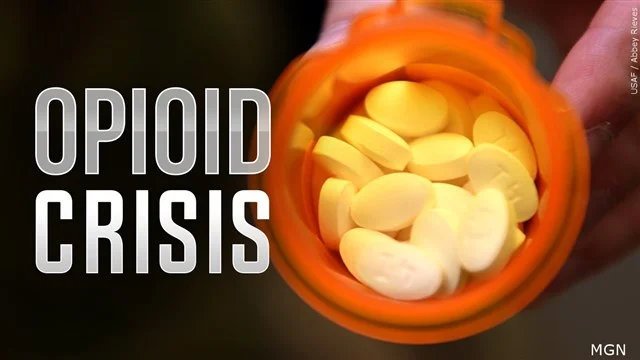New OHA report details rise in opioid overdoses; meth, fentanyl fuel more deaths, hospitalizations

PORTLAND, Ore. (KTVZ) — Methamphetamines and synthetic opioids such as fentanyl helped drive an increase in opioid overdoses and related deaths in 2021, according to a new Oregon Health Authority report.
The report, Opioids and the Ongoing Drug Overdose Crisis in Oregon, shows that overdoses involving multiple drugs – known as polysubstance overdoses – also rose during 2021 and now account for more than half of all fatal overdoses. In addition, hospitalizations increased in 2021, following decreases between 2018 and 2020. Charges for drug overdose-related hospitalizations reached $170 million and overdose-related emergency room charges reached $50 million.
“What this report tells us is that, even as prescription opioids were on the decline in Oregon over the last decade, misuse of synthetic and prescription opioids and other drugs continues to take a heavy toll on everyone in our state,” said Tom Jeanne, M.D., M.P.H., deputy health officer and deputy state epidemiologist at OHA’s Public Health Division, who served as an advisor on the report. “We need to continue our efforts focused on enhanced prevention across the continuum of drug use.”
The report also describes those at highest risk for unintentional drug overdose death in 2021, which were non-Hispanic American Indians and Alaska Natives, non-Hispanic Blacks, and males. At lowest risk were people of Hispanic ethnicity and non-Hispanic Asians and Pacific Islanders.
“These are populations that have been unfairly affected by systemic racism, socioeconomic and political injustices and bias, which through multiple pathways can worsen health outcomes and increase the risk of experiencing a drug overdose,” Jeanne said.
The report noted some trends that presented opportunities for intervention with those at risk of overdoses.
For one, emergency medical services (EMS) personnel administered naloxone, a drug that rapidly reverses an opioid overdose, during 5,556 encounters in 2021, which is up from 3,758 encounters in 2019. In most of these cases the patient was transferred to a medical care facility for treatment.
In addition, there were almost 73,000 emergency department visits and more than 17,000 hospitalizations related to substance use disorder or intoxication issues other than an overdose in 2021. Such health care interactions represent opportunities to connect patients to treatment, prescribe naloxone – a medicine that rapidly reverses an opioid overdose – and provide other supports to reduce their risk for experiencing future overdoses, the report explains.
Providing comprehensive, non-stigmatizing harm-reduction services for people who use drugs is among a number of response strategies the report points to. Others include education for people who have never used drugs; resilience building and support to strengthen protective factors among those at higher risk for drug use and for developing substance use disorder; ensuring universal access to culturally sensitive treatment; and maintaining strong support for people in recovery, including peer support workers.
“Each non-fatal overdose and medical or behavioral health care visit has the potential to be a touch point with prevention, treatment and recovery services to support recovery and reduce the risk of a future fatal overdose,” according to the report.
An overdose is always a medical emergency. Individuals should call 911 before administering naloxone. Oregon’s Good Samaritan Law protects the caller and the person who has overdosed against possession and paraphernalia charges.
OHA’s Naloxone Rescue for Opioid Overdose webpage contains naloxone frequently asked questions and a map showing Oregon pharmacies that distribute the medicine. In Oregon, naloxone is available without a prescription. Anyone actively using opioids, or other illicit substances, can get naloxone and other harm-reduction materials at no cost through syringe service programs. Syringe service programs are available to anyone who uses drugs, regardless of whether they inject them. Here is OHA’s list of syringe and needle exchange services available in Oregon.
OHA has developed the following guidance for people who use drugs:
- Unless a pharmacist directly hands you a prescription pill, assume it is counterfeit and contains fentanyl.
- Assume any pills obtained from social media, the internet or a friend are counterfeit and contain fentanyl.
- If you are using pills, don’t use alone and always have naloxone on hand and visible.
- Test your drugs with fentanyl test strips before you use them. Fentanyl test strips can often be accessed at local harm-reduction sites.